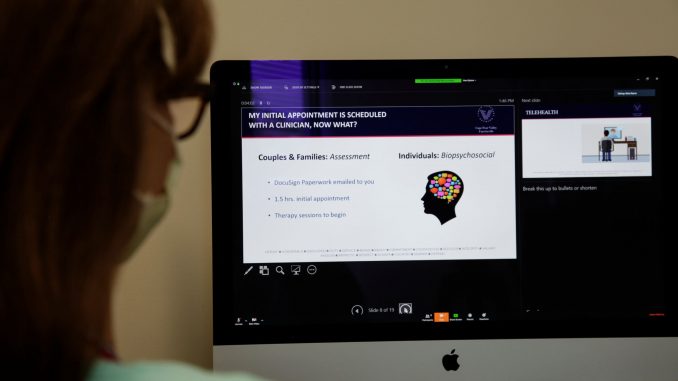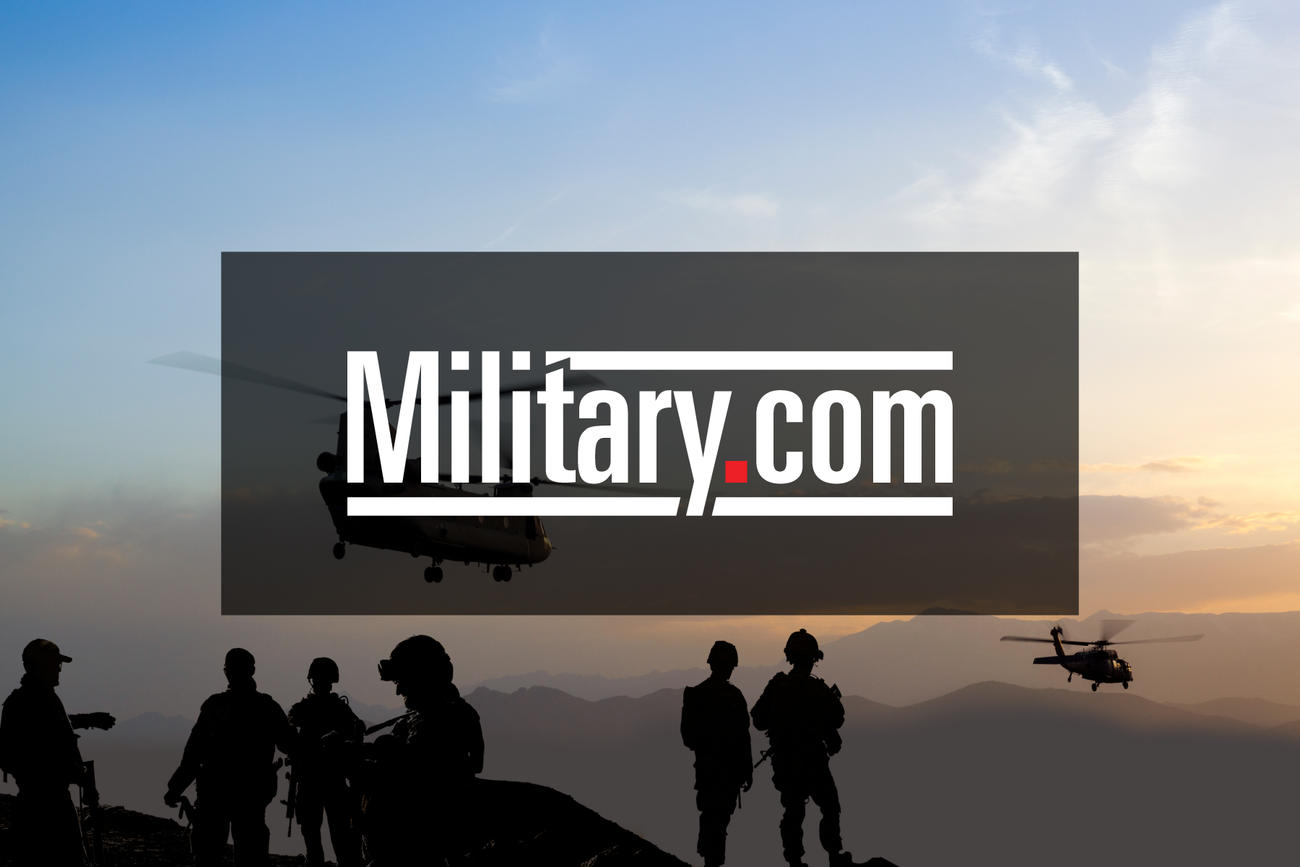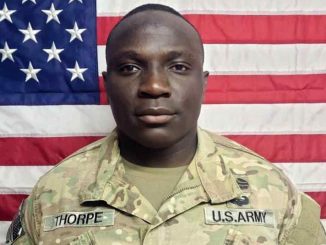

FAYETTEVILLE, N.C. — When Kristofer Goldsmith was discharged from the Army in 2007 he was in crisis.
He had been trained as a forward observer — the person who spots a target and gives coordinates to artillery — but when he got to Iraq, the then 19-year-old instead found himself photographing dead bodies for intelligence gathering. A suicide attempt before his second deployment triggered a less than honorable discharge and a long fight to gain honorable status after being diagnosed with PTSD.
Goldsmith credits the U.S. Department of Veterans Affairs medical staff with saving his life.
The VA and its partner mental health providers have kept thousands of veterans in treatment during the coronavirus pandemic through telehealth appointments. But as job losses and increased social isolation take an extended toll, some veterans’ advocates worry the already understaffed VA medical facilities can’t keep up and that telehealth isn’t enough.
“After years of self-imposed isolation … I was really in need of person-to-person contact,” said Goldsmith, now the assistant director of policy at Vietnam Veterans of America. “Flash forward almost 13 years now since I got out, and telehealth is right for me.”
The VA on Friday kicked off a “Now is the Time” campaign aimed at alerting veterans and their families to the mental health resources that are available to them.
But veterans advocates still are waiting for a report by a White House task force established by President Donald Trump last year that was charged with developing a national roadmap to boost mental health care and stem persistently high suicide numbers among veterans, who have been hard hit in the pandemic.
Release of the task force report had been scheduled in March but was abruptly shelved due to the outbreak.
“We are not happy about this decision because we understand that there are partnerships and financial resources tied to this plan that we’d like to see implemented immediately,” said Chanin Nuntavong, executive director of The American Legion’s Washington office.
VA Secretary Robert Wilkie told veterans groups in a call last week that the draft report was being finalized but declined to give a release date.
An administration official, who requested anonymity to reveal internal deliberations, told The Associated Press that officials planned to unveil the plan around Memorial Day. Karen Pence, wife of the vice president, will help launch the effort.
VA officials said telehealth medical appointments jumped from 20,000 in February to nearly 154,000 in April. Many of the department’s partners have moved most or all of their mental health appointments to telehealth, including the Cohen Veterans Network which transitioned 98% of patients at its 15 clinics.
The VA has provided some veterans with tablets, phones and affordable data rates through several private partnerships. Dr. Matt Miller, acting director of the VA’s suicide prevention program, said veterans aren’t waiting long for telehealth sessions, but only wait times for in-person appointments are tracked.
Sherman Gillums Jr., the chief advocacy officer for AMVETS, said telemedicine is likely saving lives, but it is also likely missing some older or less tech savvy veterans. He wants the VA to move veterans with canceled appointments to the front of the line when things reopen and make more inpatient beds immediately available.
“I just don’t want them to oversell telemedicine. We had it before when veteran suicide became an issue, and it wasn’t a fix,” Gillums said.
Gillums said a suicide prevention tool created by AMVETS to train family members to spot signs of suicidal thoughts before a veteran gets to a crisis could help families during stay-at-home orders.
For years, the government reported that 20 veterans die by suicide each day, about 1.5 times higher than non-veterans. Last fall, the VA adjusted the methodology to remove from the count some active-duty servicemembers and former members of the National Guard and Reserve, updating the veteran suicide rate to 17 a day based on 2017 data, the most recent available. There were 6,139 suicide deaths in 2017, which is up 129 from the previous year, even as the total veteran population declined.
The government says about two-thirds of those were not under VA care, pointing to a need for improved outreach.
“We have been very busy during the COVID crisis — with our efforts focused on getting in front of the mental health crisis that we know is coming,” Barbara Van Dahlen, executive director of the task force, told the AP. The group has boosted social media efforts during the pandemic.
At Cohen Veterans Network, website traffic has increased, including a spike between midnight and 4 a.m. Saturdays when people are alone or experiencing insomnia.
Anthony Hassan, the president and chief executive officer of Cohen, said he doesn’t believe the country’s mental health system is prepared for the surge likely to happen from the pandemic. Cohen is opening 10 new centers by the end of next year and hiring more staff.
“The one thing I don’t want to be is too late… We need to be talking now about how we can make sure we are ahead of this,” Hassan said.
Staff have set up online groups— yoga classes, mindfulness training, sessions about unemployment — to help veterans and families cope.
Chad Sneary was only a few hours into his shift at a Mooresville, North Carolina, manufacturing plant when he was laid off in early April. The 43-year-old, who served six years in the Marine Corps and two in the Ohio National Guard, insisted on working his full shift.
Sneary and his family are surviving on pantry items and hoping he is approved for unemployment soon.
“Financial skills is not something the military ever taught you. Most of us live paycheck to paycheck,” he said.
New government statistics released Friday show the unemployment rate among veterans in April was 11.7%, up from 2.3% a year earlier. The overall unemployment last month was 14.7%.
The Independence Fund, a nonprofit that helps critically wounded service members, has received hundreds of financial requests and is struggling to meet a nearly 600% increase in need.
Meanwhile, the Iraq and Afghanistan Veterans of America has seen an almost 25% increase in the hundreds of calls to its rapid response hotline for veterans in crisis. Jeremy Butler, the group’s chief executive officer, said the largest increases are requests for financial, housing or mental health referrals.
Goldsmith, who has spent years advocating for other veterans, worries about the trauma that national guard members, first responders and others are experiencing and whether they will get care.
“There is going to be a lot of survivors’ guilt,” he said. “People don’t die from PTSD in the midst of war. When they sit with these new fresh raw memories, that’s when PTSD takes lives.”
___
Lauer reported from Philadelphia, and Yen reported from Washington. AP Economics Writer Christopher Rugaber contributed to this report.
This article was written by SARAH BLAKE MORGAN, CLAUDIA LAUER and HOPE YEN from The Associated Press and was legally licensed through the NewsCred publisher network. Please direct all licensing questions to legal@newscred.com.
© Copyright 2020 The Associated Press. All rights reserved. This material may not be published, broadcast, rewritten or redistributed.






Be the first to comment